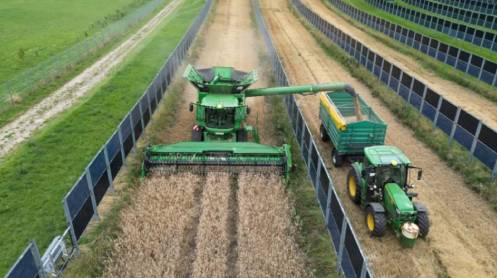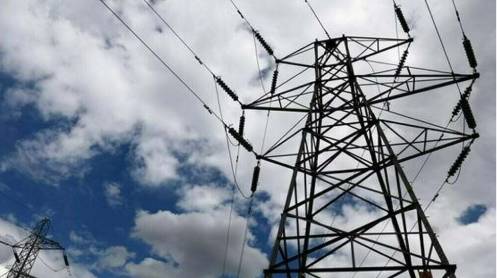If you haven’t heard of vertical agrivoltaics systems, that’s probably because it’s such a new technology that many countries, including the United States, don’t have any farms using it yet. That’s set to change, at least for the U.S., however, as the first-ever vertical agrivoltaics system is about to be built in Vermont.
An agrivoltaics system uses solar panels installed on farmland so the land can be simultaneously used to grow crops and generate clean, renewable energy. Vertical agrivoltaics is where the panels are installed vertically, leaving more space for growing.
The Vermont project is being developed by U.S. solar energy company iSun and German agrivoltaics company Next2Sun. The latter company has already built similar projects in Germany. Their U.S. client has not been revealed, but Electrek speculates that “it’s pretty obvious that it’s a small- to medium-sized farm because it’s in Vermont.”
“Thanks to the vertical mounting of the modules and the adaptability of the installation to the needs of the farmer, the valuable land is almost completely preserved for agriculture,” iSun CEO Jeffrey Peck said.
Several solar projects throughout the U.S. have been opposed by neighbors because they would take up too much space, and one study concluded that local opposition poses a “significant obstacle” to the clean energy transition.
That’s why solutions like installing solar panels vertically on still-functioning farmland could be instrumental in getting more Americans to accept solar panel development, leading us away from polluting, dirty energy sources like gas and oil.
Other solutions have included floating solar farms, placing solar canopies over parking lots, and installing solar panels on roofs.
“The nice thing is that this will allow dual use of the land, and land likely close enough to a large power line for electrical distribution, and extra income to the farmers as well. I’ve read about communities opposed to solar [because] the farmer would lease/sell the land and it would be cleared for the solar to cover the acreage. With this method, I think it would also reduce NIMBY [not in my backyard] protests,” wrote one Electrek commenter.
Join our free newsletter for weekly updates on the coolest innovations improving our lives and saving our planet.




